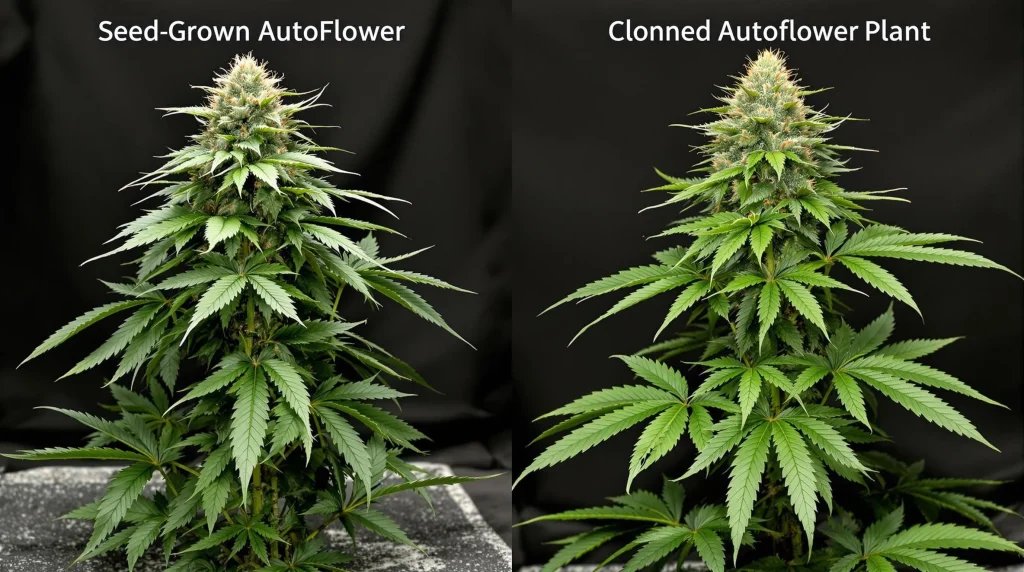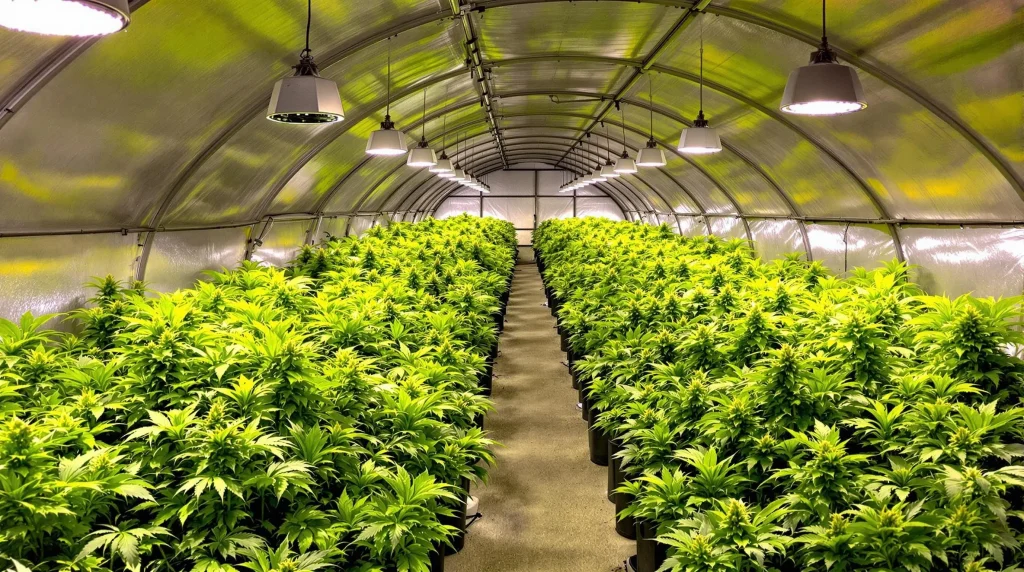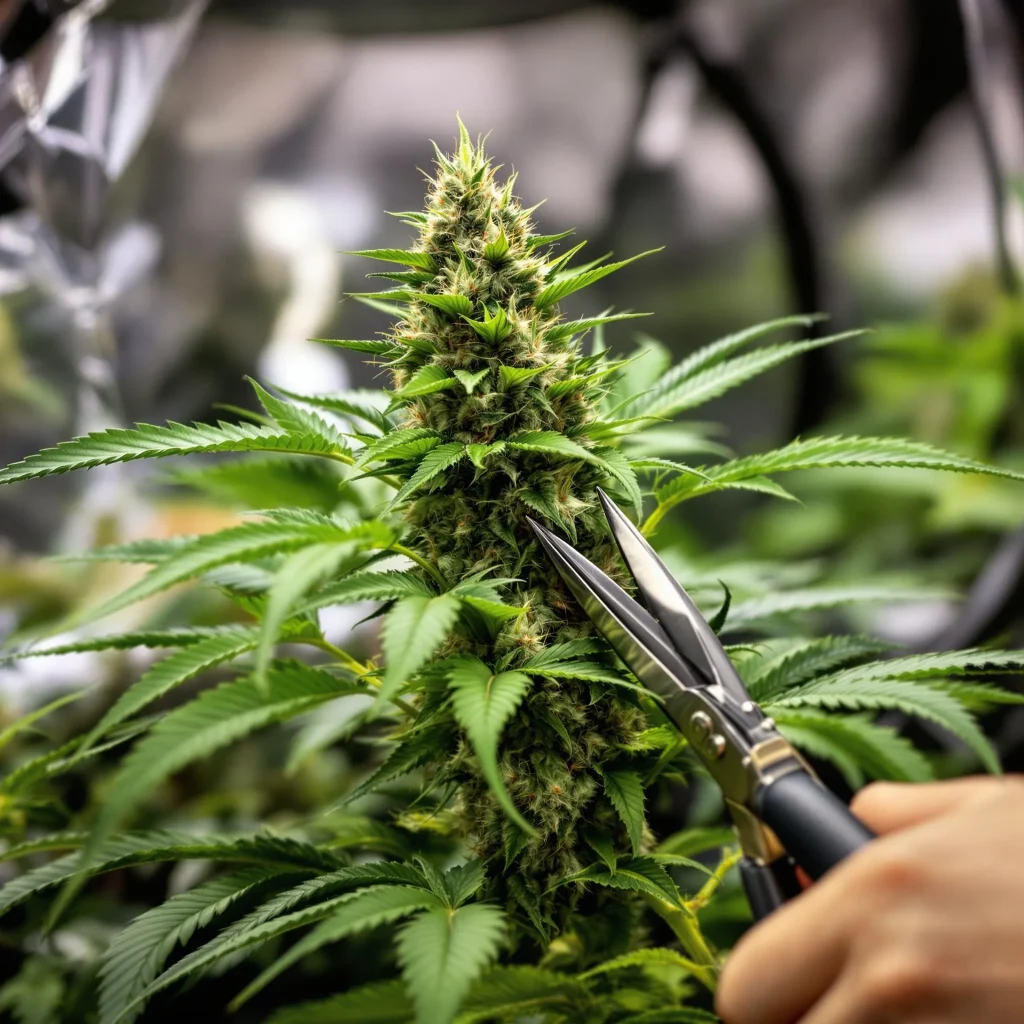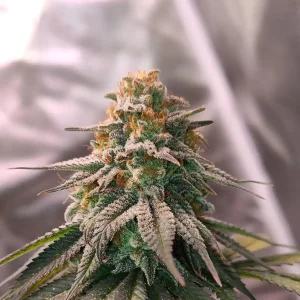What Are Autoflower Clones?
Autoflower clones are cuttings taken from a mature autoflowering cannabis plant to produce genetically identical offspring. Unlike photoperiod strains, which rely on light cycles to initiate flowering, autoflowers transition to the flowering stage based on age, typically starting to flower after about 21 days, regardless of light exposure. This age-dependent flowering trait poses significant challenges for cloning.
Many growers are intrigued by the possibility of cloning autoflowers, hoping to replicate high-quality genetics without having to start from seed. However, the fixed life cycle of these plants makes the cloning process less effective than with photoperiod strains. Autoflower clones will always flower according to the same timeline as their parent plant, which limits their vegetative growth phase and reduces their overall yield potential.
How Do Autoflower Clones Differ from Photoperiod Clones?
In photoperiod cannabis plants, clones taken during the vegetative stage can be kept in that phase indefinitely under appropriate light conditions, allowing them to grow to a desired size before flowering is induced. This flexibility enables growers to produce multiple uniform plants from a single mother plant.
In contrast, autoflower clones inherit the same internal genetic clock as their parent plant. This means that an autoflower clone will flower at the same age as the original plant, regardless of when it was taken as a cutting. Consequently, autoflower clones often have minimal time to establish roots and vegetative growth before entering the flowering stage, leading to smaller plants with reduced yields. Because of this, autoflower clones are not a practical solution for commercial cultivators but may be useful for hobby growers experimenting with plant preservation. Learn more about the differences between autoflower and photoperiod strains

Advantages and Disadvantages of Autoflower Clones
Advantages:
- Genetic Consistency: Cloning ensures the offspring will have the same genetic traits as the parent plant, which is beneficial if the parent has desirable characteristics.
- Pest and Disease Management: Starting new plants from clones can help bypass some of the vulnerabilities of seedlings, such as susceptibility to certain pests and diseases during the early stages of growth.
- Preserving Rare Phenotypes: If a grower finds an exceptional autoflower phenotype, cloning may be a way to maintain its unique characteristics, even if the plant remains small.
Disadvantages:
- Limited Vegetative Growth: Due to the predetermined lifecycle, autoflower clones have little time to develop before flowering, resulting in smaller plants and lower yields.
- Timing Challenges: Synchronizing the growth stages of autoflower clones can be difficult, making it hard to manage a uniform crop.
- Resource Inefficiency: Given the reduced yield potential, the effort and resources invested in cloning autoflowers may not always be worth it.
- Difficulty in Root Development: Autoflower clones often struggle to develop strong root systems before flowering begins, making their survival rate lower than that of photoperiod clones.
How to Clone Autoflower Cannabis Plants Successfully
Can You Clone Autoflowering Strains?
While it is technically possible to clone autoflowering strains, it is not always practical due to their fixed flowering timeline. Traditional cloning techniques do not work as effectively because the clone will remain on the same schedule as the mother plant, significantly reducing its size and productivity.
Step-by-Step Guide to Cloning Autoflower Cannabis
- Select a Healthy Mother Plant: Choose a robust autoflowering plant with strong genetics and desirable traits.
- Take a Cutting: Use sterilized scissors to cut a branch from the lower part of the plant.
- Trim the Leaves: Remove excessive leaves to reduce water loss and focus energy on root development.
- Dip in Rooting Hormone: Enhance root formation by dipping the cut end into a rooting hormone gel or powder.
- Place in a Growing Medium: Transfer the cutting into a rock wool cube, peat pellet, or another suitable medium.
- Maintain Humidity and Temperature: Keep the humidity around 70% and temperature between 72-78°F to encourage root growth.
- Monitor Root Development: In about 10-14 days, the clone should begin developing roots. However, due to its short lifecycle, it will begin flowering shortly after.
Best Conditions for Autoflower Clone Rooting
To improve success rates with autoflower clones, ensure:
- Humidity Control: Use a humidity dome or misting system to prevent clones from drying out.
- Stable Lighting: A gentle 18/6 or 20/4 light cycle provides enough energy for root development.
- Nutrient Support: Low-dose nutrients help strengthen the young plant without overwhelming it.
- Soil Selection: Use well-draining soil rich in organic matter to support root growth.
- Airflow Management: Proper ventilation ensures that plants receive enough oxygen while preventing mold and mildew.
Growth Cycle and Challenges of Autoflower Clones
Why Autoflower Clones Grow Differently
Since autoflower clones follow the same age-based timeline as their mother plant, they will have a much shorter vegetative period. This makes them inherently smaller than regular clones from photoperiod strains. Instead of robust plants that have time to grow, autoflower clones will enter flowering early, leading to lower yields and reduced plant structure. Because of their accelerated life cycle, they require careful management to achieve even modest yields.
Expected Yield and Flowering Time for Autoflower Clones
The yield of autoflower clones is often significantly lower than that of their seed-grown counterparts. While a seed-grown autoflower plant can produce 1-4 ounces per plant, a clone might yield only a fraction of that. Their flowering time remains the same, typically between 8-10 weeks from germination of the mother plant. Growers who attempt cloning must balance expectations with the reality of minimal yield potential.
Common Problems When Cloning Autoflowers
- Weak Root Systems: Autoflower clones often struggle to develop strong roots before flowering begins.
- Reduced Yield: The shorter vegetative phase limits size and bud production.
- Shock Sensitivity: Autoflowers are less forgiving to stress, making cloning even more challenging.
- Limited Recovery Time: Cloning stress can lead to stunted plants with fewer viable buds.

FAQs About Autoflower Clones
Can Autoflowers Be Cloned Successfully?
Yes, but with limitations. Autoflower clones inherit the same genetic timeline as their parent plant, meaning they have little time to develop before flowering begins. As a result, cloned autos remain smaller and produce lower yields compared to their seed-grown counterparts. While possible, cloning autoflowers is generally not recommended for high-yield cultivation.
Why Do Autoflower Clones Stay Small?
Unlike photoperiod plants, which can stay in the vegetative stage indefinitely with proper light cycles, autoflowers transition to flowering based on age. When an autoflower is cloned, it continues to follow the mother plant’s timeline, giving it minimal time to grow roots and establish a strong structure before flowering starts. This results in significantly smaller plants and lower productivity.
Are There Alternatives to Cloning Autoflowers?
Yes. If you want to preserve autoflower genetics, consider:
- Backcrossing: Breeding an autoflower with itself or a stable parent strain.
- Tissue Culture Propagation: A laboratory-based method to propagate cannabis genetics.
- Feminized Autoflower Seeds: Rather than cloning, using feminized autoflower seeds ensures genetic consistency without compromising yield potential.





